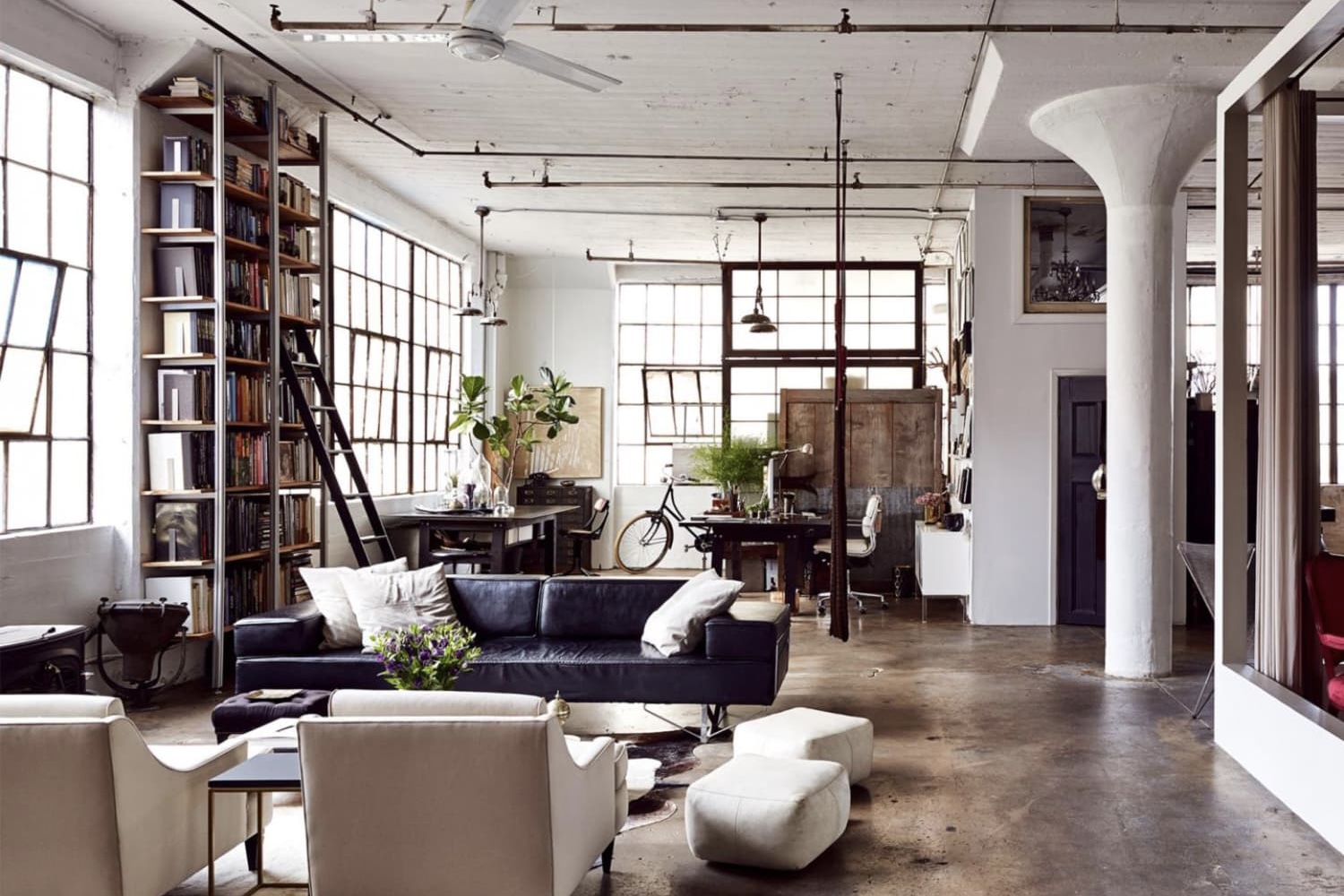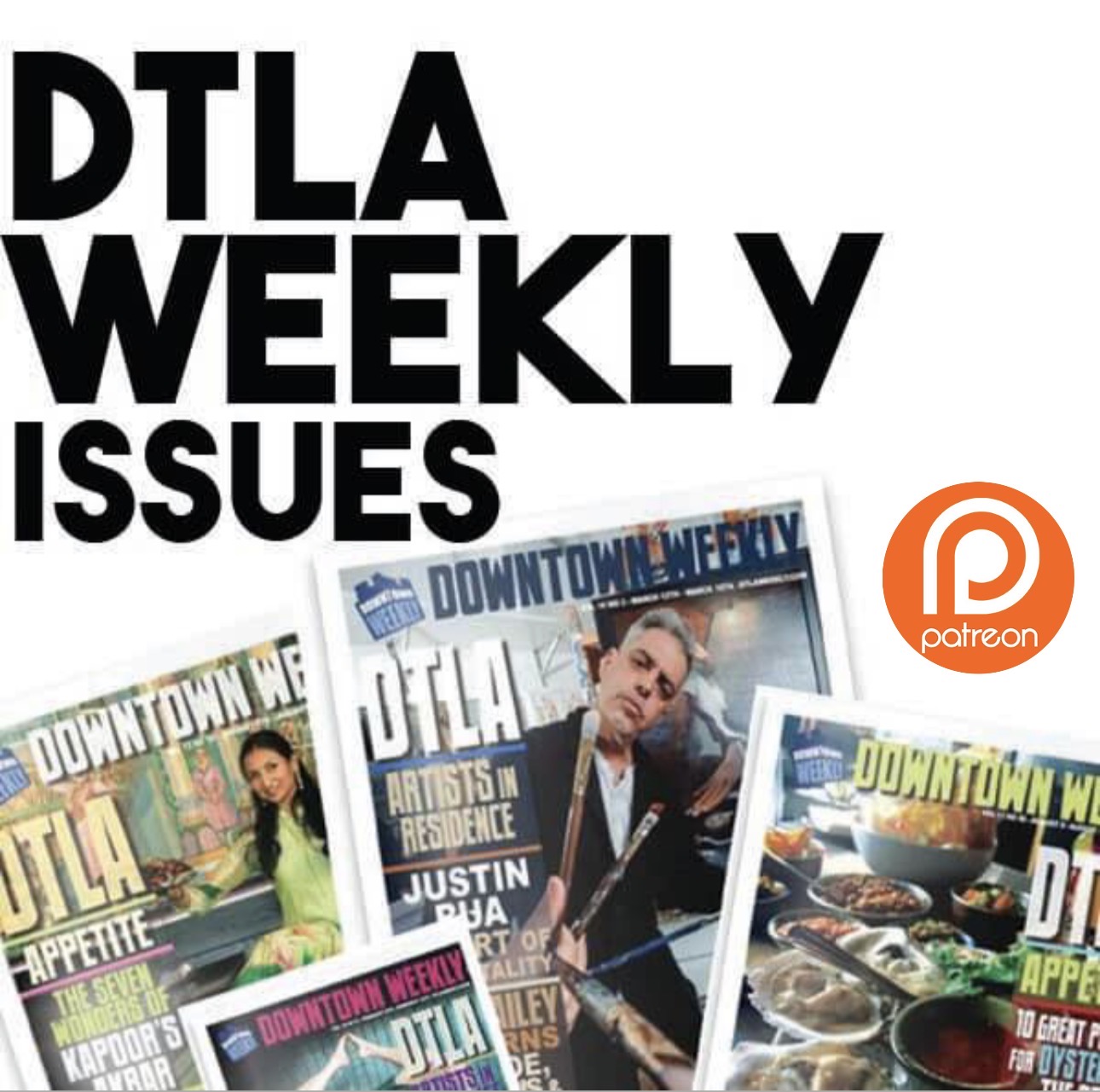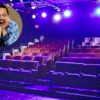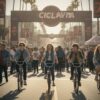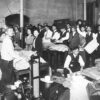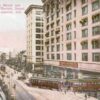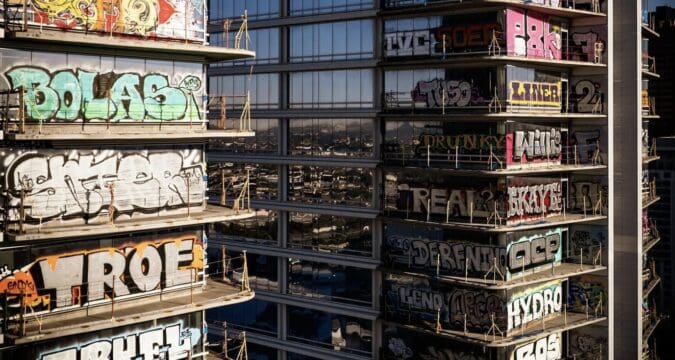
Everyone seems to have their own opinion as to what should be done with the Oceanwide Plaza.
Recently, the controversial project made headlines after at least 27 floors of the towers were covered with graffiti by unknown taggers, who accessed the buildings through the scaffolding and spray-painted various words and symbols on the exterior walls.
Neighbors see it as an eyesore. Artists liken it to a triumph of street art. And investors don’t want a sunken cost.
So, who’s right?
Oceanwide Plaza represented a significant effort in DTLA to reshape and expand the city’s skyline, along with several other high-rise development projects started in the 2010s.
The project, designed by CallisonRTKL and developed by Beijing-based Oceanwide Holdings started construction in 2015 with an estimated cost of $1 billion. It aimed to feature residential units, commercial spaces, and a luxury hotel, positioned strategically near key landmarks such as the Crypto.com Arena and the Los Angeles Convention Center.
The complex consisted of three towers. Tower one, which would house a 184-room five-star Park Hyatt hotel and 164 serviced condo residences; and towers two and three, which would have 504 residential condominiums. The towers would range from 40 to 49 floors in height and reach up to 675 feet. The project also included a three-story retail mall with 153,000 square feet of space, and a two-acre private park on the ninth floor.
However, the project encountered several setbacks and challenges, such as rising costs, labor disputes, design changes and regulatory issues. It also faced scrutiny from the US government, which investigated Oceanwide Holdings for possible ties to money laundering and national security risks. The project was further affected by the trade war and the COVID-19 pandemic, which strained the relations and the finances between the US and China.
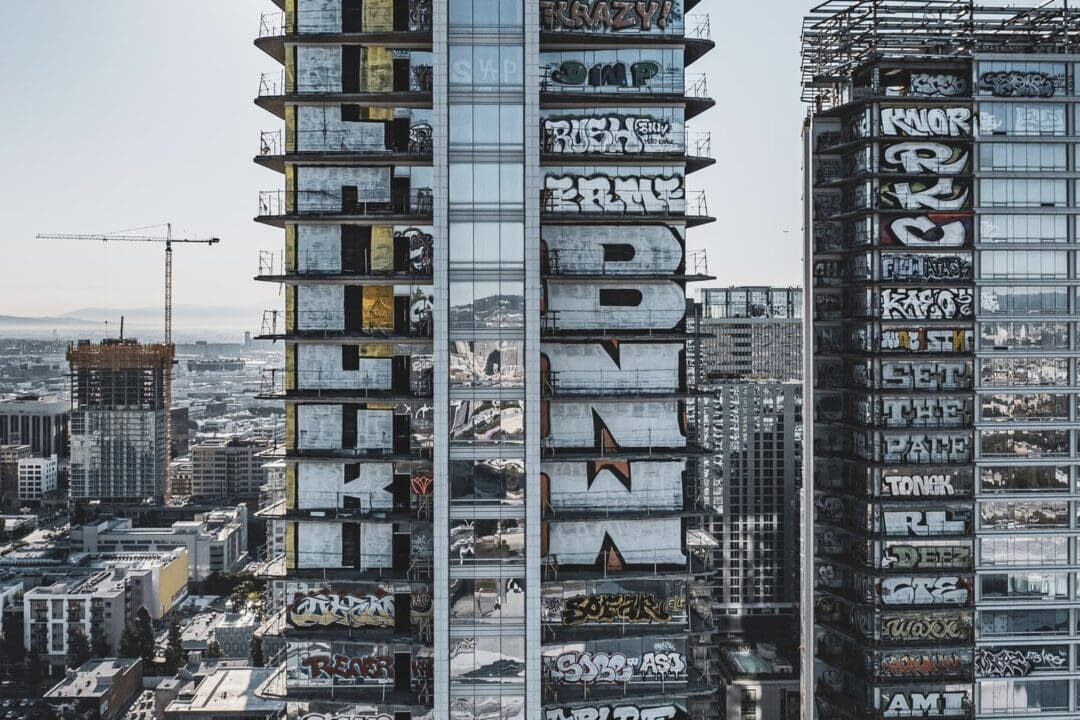
Photos by Salvador Avila
In January 2019, construction was halted, as Oceanwide Holdings announced that it was undergoing a capital restructuring, and that work would resume shortly. However, the project remained stalled for months, as subcontractors filed liens and lawsuits against the developer for unpaid work totaling nearly $100 million. The project was briefly resumed in March 2019, after Oceanwide Holdings secured a $184 million loan, but was stopped again in late 2019, as the developer failed to meet the loan payments and deadlines.
Since then, the project has been in limbo, with no clear indication of when or if it will be completed.
Many of the residents and businesses in the surrounding area are unhappy with the graffiti and consider it an ugly sight, with some going as far to call it a nuisance. They complain that the graffiti attracts more vandalism, crime, and noise to their neighborhood, and that it lowers their property values. There are also concerns about the safety and structural integrity of the unfinished buildings. Many feel that the developer should clean up and secure the property as soon as possible or sell it to someone who can finish or demolish it.
Many in the artistic community, however, feel differently. To the taggers who sprayed the buildings, their graffiti is not vandalism but art and activism. They claim that they are beautifying and revitalizing a public space that the developer left unfinished and unused.
The Los Angeles City Council seems to agree with the former. They voted on last Friday to approve a proposal that requires the developer of the graffiti-covered skyscraper complex to clean up and secure the property within 15 days. The motion was introduced by Councilmember Kevin de León, after four individuals were arrested for trespassing on the site.
The motion is supported by several community groups, such as the Downtown Los Angeles Neighborhood Council, the South Park Business Improvement District, and the Central City Association.
It is opposed, however, by the developer, Oceanwide Holdings, which claims that it is still committed to finishing the project and that it has been working with the city and the lenders to resolve these issues.
But unless Oceanwide Holdings gets the funding it needs, completion will continue to loom into the future.
Regardless, the city council, backed by the police and understandably frustrated neighbors, made themselves clear. The spray-painted instillation made from the complex is now literally the single largest in the world, but will soon be rendered an into evanescent fixture of Los Angeles’ art history.
Enjoy it while it lasts.
![]()







